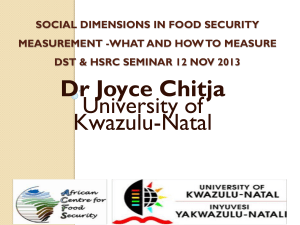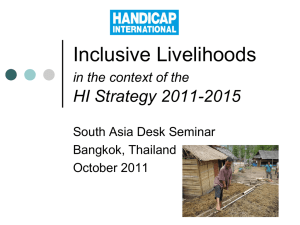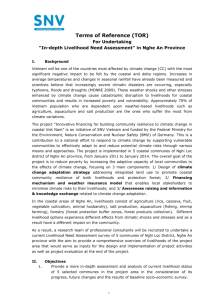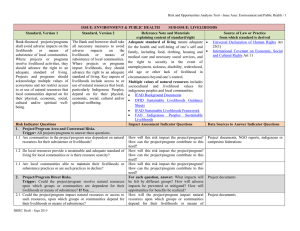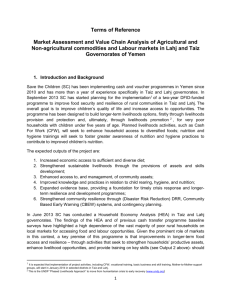Water and Livelihoods Climate change will have impacts on
advertisement
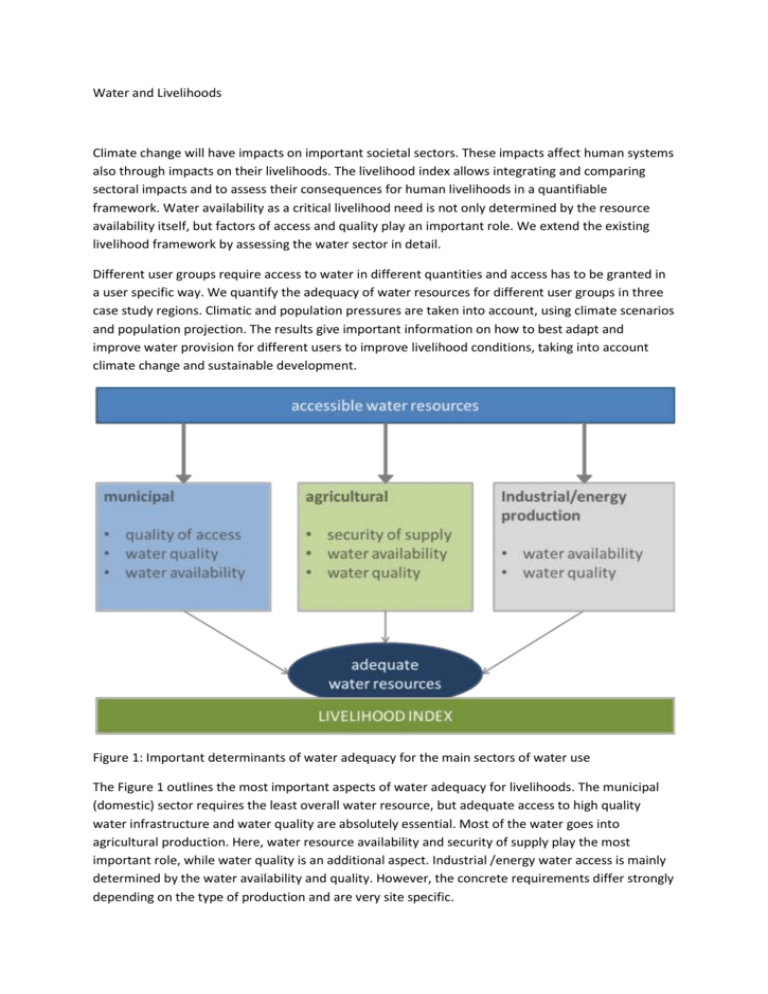
Water and Livelihoods Climate change will have impacts on important societal sectors. These impacts affect human systems also through impacts on their livelihoods. The livelihood index allows integrating and comparing sectoral impacts and to assess their consequences for human livelihoods in a quantifiable framework. Water availability as a critical livelihood need is not only determined by the resource availability itself, but factors of access and quality play an important role. We extend the existing livelihood framework by assessing the water sector in detail. Different user groups require access to water in different quantities and access has to be granted in a user specific way. We quantify the adequacy of water resources for different user groups in three case study regions. Climatic and population pressures are taken into account, using climate scenarios and population projection. The results give important information on how to best adapt and improve water provision for different users to improve livelihood conditions, taking into account climate change and sustainable development. Figure 1: Important determinants of water adequacy for the main sectors of water use The Figure 1 outlines the most important aspects of water adequacy for livelihoods. The municipal (domestic) sector requires the least overall water resource, but adequate access to high quality water infrastructure and water quality are absolutely essential. Most of the water goes into agricultural production. Here, water resource availability and security of supply play the most important role, while water quality is an additional aspect. Industrial /energy water access is mainly determined by the water availability and quality. However, the concrete requirements differ strongly depending on the type of production and are very site specific. The results show that in the three case study countries water resources are not necessarily the limiting factor for adequate water access, but infrastructure and water quality play an important role. Water resources are a limiting factor mainly in densely populated areas and population growth in these regions over the coming decades may lead to situations of scarcity there. Method Fuzzy logic was used to aggregate all input factors into an integrated indicator of water adequacy for human livelihoods (Figure 2). Figure 2: Outline of the fuzzy aggregation process to calculate the adequacy of water resources. Data Sources: Sector Municipal Indicator Access Water quality Variable Source of drinking water Phosphorus loading Nitrogen loading Sediment loading Organic loading Mercury Resolution Subnational values (Regions) 0.5° Grid Source MEASURE DHS Vörösmarty et al (2010) Industrial Water quality Agricultural Water quality Security of supply Water availability Population data deposition Pesticide loading Sediment loading Thermal alteration Soil salinization Dam density Area equipped for irrigation Runoff 0.5° Grid Vörösmarty et al (2010) 0.5° Grid Vörösmarty et al (2010) Vörösmarty et al (2010) AquaSTAT LPJmL 0.5° Grid 0.083° Grid 0.5° Grid Subnational data Results were calculated using water data from LPJmL, a Dynamic Global Vegetation and Water Balance Model. We calculated results for a baseline period (1981-2010) and a short-term future scenario (2011-2040) using two climate models (HadGEM2-ES and GFDL-ESM2M) and two RCPs (2.6 and 8.5).


